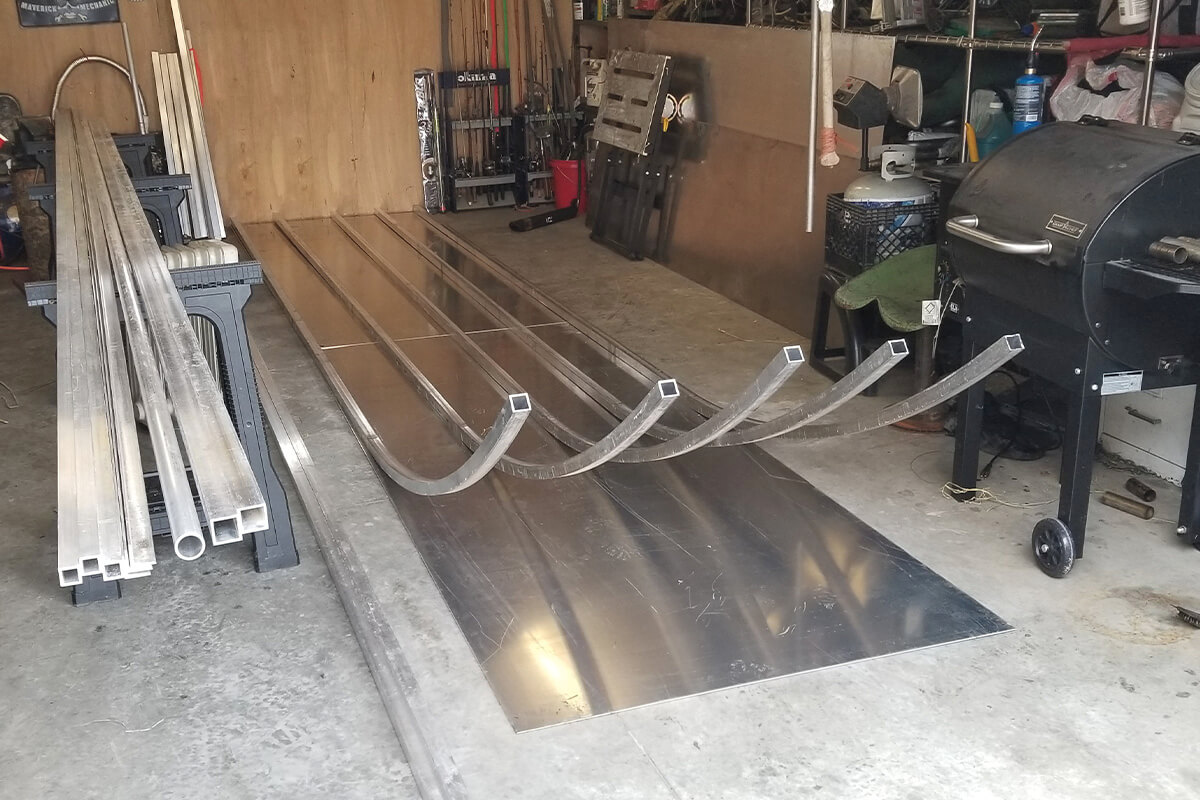
Building a Lightweight Aluminum Boat for Easy Transport
Aluminum boats have gained immense popularity due to their inherent lightweight nature, durability, and resistance to corrosion. When it comes to transportability, aluminum boats truly shine, offering a convenient and efficient solution for anglers, boaters, and recreational enthusiasts alike. This article will delve into the key aspects of building a lightweight aluminum boat specifically designed for easy transport.
Understanding the Design Principles for Transportability
To ensure effortless transport, several design principles must be carefully considered when building a lightweight aluminum boat. These principles encompass both the boat's overall structure and its specific features.
Lightweight Construction
The foundation of easy transportability lies in minimizing the boat's overall weight. This is achieved through the strategic selection of materials and construction techniques. Aluminum alloys, known for their strength-to-weight ratio, are the preferred choice for the hull and other structural components. Using thinner gauge aluminum for non-load-bearing areas like the hull sides can further reduce weight without compromising structural integrity.
Compact Dimensions
A compact design is crucial for maximizing transportability. This involves optimizing the length, beam, and overall footprint of the boat. A shorter length makes maneuvering and loading easier, while a narrower beam allows for more compact storage.
Foldable or Detachable Features
Incorporating foldable or detachable features can significantly enhance transportability. Foldable benches, removable oars, or a detachable transom can reduce the boat's overall size and make it easier to load and unload. These features are particularly beneficial for transporting the boat in the back of a vehicle or on a trailer.
Streamlined Hull Design
A streamlined hull design can minimize wind resistance, making it easier to tow the boat behind a vehicle. This can reduce fuel consumption and improve overall efficiency.
Materials and Construction Techniques
Selecting the right materials and employing appropriate construction techniques are paramount for building a lightweight aluminum boat designed for easy transport.
Aluminum Alloys
Aluminum alloys are the cornerstone of lightweight boat construction. Different alloys possess varying strengths, thicknesses, and corrosion resistance levels. Commonly used alloys include:
- 5052 H32: Known for its high strength and good weldability, making it suitable for the hull and other structural components.
- 6061 T6: Offers good strength and machinability, suitable for transom brackets, ribs, and other components that require precise shaping.
- 5083 H112: Possesses excellent corrosion resistance, making it ideal for applications where the boat will be exposed to saltwater.
Construction Methods
Several construction methods are used for aluminum boats, each offering distinct advantages:
- Riveting: This traditional method is often used for lightweight boats due to its simplicity and affordability. Rivets create a permanent bond between aluminum sheets.
- Welding: While welding adds weight, it provides a stronger and more watertight bond. TIG welding (Gas Tungsten Arc Welding) is a preferred method for aluminum due to its high quality and precise control.
- Bonding with Adhesives: Modern adhesives offer a lightweight alternative to riveting or welding. These adhesives can be used to bond aluminum panels together, creating a strong and durable bond.
Essential Features for Easy Transport
Beyond the structural aspects, incorporating specific features can significantly enhance a lightweight aluminum boat's transportability:
Transom Mounting System
A well-designed transom mounting system is crucial for easy transport. Options include:
- Fold-Down Transom: This allows the transom to fold down, reducing the boat's overall length for compact storage.
- Detachable Transom: A removable transom offers maximum flexibility and allows the boat to be transported in a disassembled state.
Carrying Handles
Strategic placement of carrying handles is essential for easy maneuverability. Handles should be positioned on the bow, stern, and sides of the boat, allowing for multiple lifting points.
Lightweight Trailer or Cart
A lightweight trailer or cart designed specifically for aluminum boats is essential for convenient transport. These trailers should be easily maneuverable, have a low towing weight, and offer secure boat attachment mechanisms.
Storage Features
Incorporating storage features that are easily accessible and secure can enhance the overall transportability experience.
Maintenance and Care
Proper maintenance is essential for preserving the structural integrity and longevity of a lightweight aluminum boat. Here are some key care tips:
- Regular Cleaning: Clean the boat regularly to remove dirt, debris, and saltwater residues. Use mild soap and water for cleaning, avoiding harsh chemicals that can damage the aluminum.
- Corrosion Protection: Apply a corrosion-resistant sealant or wax to the boat's surface to prevent the formation of rust. This is particularly important for boats that are frequently exposed to saltwater environments.
- Inspection and Repair: Regularly inspect the boat for signs of damage or wear and tear. Address any minor issues promptly to prevent them from escalating.
- Storage: Store the boat in a dry, well-ventilated area to protect it from the elements. If the boat is stored outdoors, cover it with a waterproof tarp.
Conclusion
Building a lightweight aluminum boat designed for easy transport requires a combination of thoughtful design principles, careful material selection, and sound construction techniques. By following the guidelines outlined in this article, you can create a boat that is both durable and convenient to transport, allowing you to enjoy your adventures on the water with ease and efficiency.






No comments:
Post a Comment
Note: Only a member of this blog may post a comment.